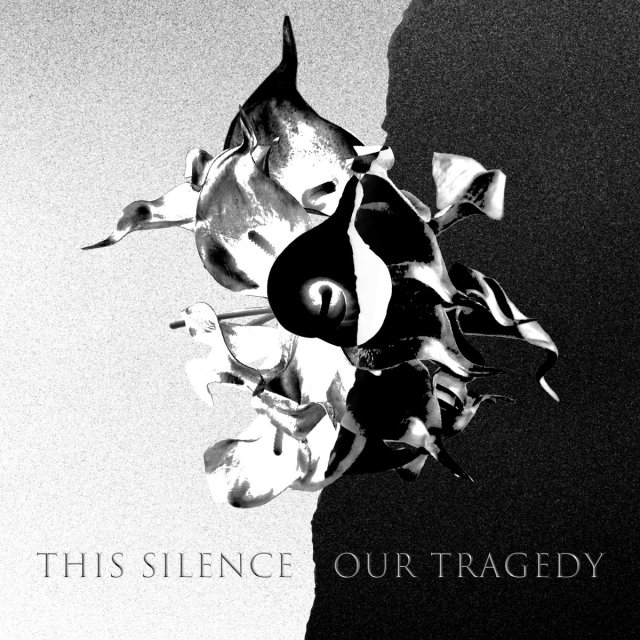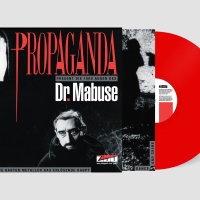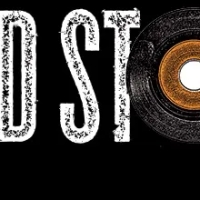![]() In 1980, Mute prime mover Daniel Miller famously made a synthpop album by a fake teenaged band who didn’t really exist as The Silicon Teens. He hired actors for interviews and sent out completely fraudulent press releases as if the group really existed. Basically, they were the synthpop Archies. By the next year, he must have been in seventh heaven, because he began releasing synthpop records by actual teenagers who wrote and played their own songs and with whom Mute released records by; Depeche Mode. And Miller didn’t have to lift a finger. Prophesy had become reality in no time at all.
In 1980, Mute prime mover Daniel Miller famously made a synthpop album by a fake teenaged band who didn’t really exist as The Silicon Teens. He hired actors for interviews and sent out completely fraudulent press releases as if the group really existed. Basically, they were the synthpop Archies. By the next year, he must have been in seventh heaven, because he began releasing synthpop records by actual teenagers who wrote and played their own songs and with whom Mute released records by; Depeche Mode. And Miller didn’t have to lift a finger. Prophesy had become reality in no time at all.
As much as I was in on the ground floor with Depeche Mode, I can’t say that I ever held the band in the sort of esteem that the earlier generation of technopop artists like Ultravox/John Foxx, Gary Numan, or Orchestral Manoeuvres In The Dark carried with me. The music seemed more facile; less groundbreaking. The songs didn’t reflect any left-field, outsider sentiments as did the works of Generation A. But Depeche Mode weren’t the half of it in 1981.
 Other synthpop newcomers that year included Soft Cell from Leeds, who had their earliest singles produced by Daniel Miller [small world], though they signed with the Some Bizzare label instead. Like The Human League, they also managed a worldwide hit single, albeit with a cover this time. Sure, the music used a synthesizer palette, but the songs were more traditional in their artistic point of view. Singer Marc Almond was a perceptive writer; you don’t write “Bedsitter” without having a strong sense of empathy and perception, but as pure content, even that fine song was worlds apart from primevally strange material like “Being Boiled.”
Other synthpop newcomers that year included Soft Cell from Leeds, who had their earliest singles produced by Daniel Miller [small world], though they signed with the Some Bizzare label instead. Like The Human League, they also managed a worldwide hit single, albeit with a cover this time. Sure, the music used a synthesizer palette, but the songs were more traditional in their artistic point of view. Singer Marc Almond was a perceptive writer; you don’t write “Bedsitter” without having a strong sense of empathy and perception, but as pure content, even that fine song was worlds apart from primevally strange material like “Being Boiled.”
And that’s what happened as synthesizers became more prevalent in the UK pop scene. The earlier technopop music had been made by weirdos and social outcasts who had been drawn to electronics as a means of self-expression by people who could have made music no other way. Once they began having success, that attracted the larger wave that followed in their path. By 1981, synthesizers wee no longer a fringe element in British pop music, and once that happened, the professionals came in and cleaned up house. Once Martin Rushent could codify how to make music electronically with synths, it was only a matter of time before other bands came to him for “that sound.” That sound got watered down, thinner, and thinner with each trip to the well. It speaks volumes that the second Altered Images album that he produced sounds much more like The Human League’s “Dare” than anything by Siouxsie + The Banshees. As far as I can tell, the actual band may not have played anything but guitars on “Pinky Blue,” by the sound of it.
 So, by my perspective, the show was over by 1981. All of the crucial moves had been made before, and it was diminishing returns on the now burgeoning synthpop front. I bought records by Generation B but few of these bands made it to core collection status. Generation C of synthpop happened by the middle of the 80s and included bands like Erasure, Pet Shop Boys, and Howard Jones. I ignored Erasure for years before a chance hearing of their fourth album finally managed to turn my head. Pet Shop Boys wrote smart songs with fantastic lyrics, but they were musically conservative. Howard Jones? A former progrocker who changed his spots to sell records in the intensely anti-prog environment of the mid-80s. [spits in disgust]
So, by my perspective, the show was over by 1981. All of the crucial moves had been made before, and it was diminishing returns on the now burgeoning synthpop front. I bought records by Generation B but few of these bands made it to core collection status. Generation C of synthpop happened by the middle of the 80s and included bands like Erasure, Pet Shop Boys, and Howard Jones. I ignored Erasure for years before a chance hearing of their fourth album finally managed to turn my head. Pet Shop Boys wrote smart songs with fantastic lyrics, but they were musically conservative. Howard Jones? A former progrocker who changed his spots to sell records in the intensely anti-prog environment of the mid-80s. [spits in disgust]
Even worse, the computerization of recording as analog gear became replaced by digital hardware meant that the whole of pop music production was transformed by techniques originally used for the likes of The Human League in 1981. What had been fringe was now mainstream. Banalized through association with garden variety pop music looking to gain an “edge” through synthpop production techniques. Always the canary in a coal mine, The Human League managed to take their devolution all the way to its conclusion by 1986, when they obtained the services of Jam + Lewis to produce their “Crash” album.
By the mid-80s, mainstream pop was just like what had started out as weird synthpop five years earlier. But a style can be considered fringe only in the context of the mainstream values contrasting with it. The difference was that people like Phil Oakey once had very different things to say with their content than perhaps Taylor Dayne, but in terms of form, the end products were becoming very similar. When The Human League got Jam + Lewis to write their album, they, in effect, became Taylor Dayne!! Any walls segregating the two artists had summarily vanished.
The social conditions that led to the emergence of technopop in the late 70s won’t ever repeat themselves. Whatever it was in the water of the UK that led to introverted young men attracted to synthesizers will only play out once more as a stylistic fad. New New Wave. Electroclash. Fill-in-the-bank. Once that actually succeeded in the marketplace it became codified and the wild west period of technopop got swept away to be replaced by settlers moving in to set up the ranch and raise their families. All of the first generation stars who had first heard Kraftwerk five years earlier and went off to do their watered down version of it, were now the source for further generations to do the same with the raw materials that they in turn pioneered. As Ultravox begat Numan, who begat Duran Duran, and so on.
– 30 –








![Chris Cross: 1952-2024 [part 2]](https://postpunkmonk.files.wordpress.com/2024/04/ultravox-cross.jpg?w=200&h=200&crop=1)



Cripes on a cracker, Dave Gahan is clearly on “medication” even in that early picture!!
LikeLike
chasinvictoria – What was Vince Clarke’s excuse? He looks 10 years older than the others. I find it hard to believe he was only 21 in that shot.
LikeLike
Hey Monk, loving this series. As you say, the later synth bands seem less groundbreaking, but in all honesty – it’s pretty tough to be so when the ground has already been broken for you!
For me, the show was far from over in 1981. I love Dep Mode’s early sing-along nursery rhyme-ish ditties almost as much as I love the sleaze of Soft Cell (I can practically smell the amyl and catch an STD just from listening to Marc Almond!). I admired the sexual politics of Bronski Beat, and while I can see where you’re coming from in labelling the Pet Shop Boys musically conservative, their brilliant lyrics are paramount (and I think their updated disco sound is pretty sweet too). Anyway, what’s the name of that Devo compilation? “Pioneers Who Got Scalped,” that’s what. The settlers, as you mention, always reap the riches.
LikeLike
Taffy – Welcome back! It’s not been the same without you. I thought we’d lost you for certain during the seemingly endless Simple Minds thread. Sorry about that one, but it couldn’t be helped!
At least the pioneers of synth pop did pretty well for themselves. No tears for the likes of Numan, OMD, The Human League, or even Ultravox. But only one band ended up playing the Rose Bowl [as headliner]. It’s not surprising that Depeche Mode ended up holding so many winning cards since their material was more marketable dark emotional content [after a fashion]. OMD [when they were at the most interesting point in their careers] wrote songs about telephone booths! Not the stuff of teen angst dreams, I realize, but I’ll take one song about an inanimate object over a hundred dark emotional confessions. It’s just that much more interesting to me.
And I did ride the DM bus pretty hard once Vince Clarke split and the much more interesting second album came out. At least through the ” Violator” era. But when it ended, it ended for good. Forays into modern PSB [“Fundamental”] revealed that the band had lost none of their brilliance in the years I wasn’t paying attention. Yes, Neil Tennant is a genius lyricist, but to this day PSB are not my go-to band for synths. In fact, I hardly think of them in that way at all.
LikeLike
I can never give short shrift to Soft Cell. They traded strange for seedy and fringe. Dave Ball is an unsung synth hero and Soft Cell, if anything, got more obscure with each release, NOT more popular. They found a very comfortable middle ground that brought a bit of Art/Glam into synthpop. I remember the backlash after the highs of their first chart successes with Tainted Love, Bedsitter, Torch, Say Hello Wave Goodbye and What! (and their unmatchable 12″ versions – which are equal to if not even better than the 7″ versions), when they released Where The Heart Is with it’s social commentary on family disfunction. They touched a nerve – which was their intention – and paid the price in the charts and reviews.
As for Depeche Mode, I didn’t immediately take to the sound of Speak + Spell. I may not have really understood what Vince Clarke was trying to achieve on that debut album and wouldn’t get the point until Yazoo and his other pre Erasure collaborations to understand his musicality. In fact it is the albums immediately after Clarke’s departure that turned me on to Depeche Mode. The moodiness of A Broken Frame, the proto-industrial electronics of Construction Time Again and Some Great Reward were very welcome and include almost all of my favorite DM tracks. After this period they began to take themselves too seriously and their pomposity at time reached U2 levels – which is NEVER a good thing.
Howard Jones – regardless of his popularity is just an 80’s footnote like Naked Eyes in my mind. The Gen B band that I think had some of the most potential, but may have squandered it, was Blancmange.
The beauty of Pet Shop Boys is the intelligent guile of positioning them among the synthpop bands of the time when they were so obviously much, much more. If any of these New Gen synthpop bands understood and too full advantage of technology and the studio it was Pet Shop Boys. They had an ear to the ground and incorporated urban sounds from London to NYC, classic pop forms, wry and intelligent lyrics and studio sheen to create Pop-Perfect music with an unashamed British schoolboy twist.
LikeLike
Echorich –
Yes, Blancmange are a band who – unlikely as it may have seemed oven a decade ago – made some records that are holding up well, particularly Mange Tout (best album title ever, by the way). Their newish album form a few years back is much better than I would have anticipated.
But Monk, I wanted to add this: you clearly had no desire – or need – to name-check every single relevant band of the era you’ve been discussing in this series of posts. The representatives you chose to mention clearly make your point. But having made the statement “The earlier technopop music had been made by weirdos and social outcasts who had been drawn to electronics as a means of self-expression by people who could have made music no other way” in virtually the same breath as a discussion of Daniel Miller and Mute Records, one must (must, I say) point to Fad Gadget as the poster child for this point of view, even more so (I ‘dare’ conjecture) than Human League. And Fad Gadget – perhaps in defiance of your overarching point – never sold out like HL did.
(Trivia: Depeche Mode’s early gigs were opening slots for Fad in clubs, and when he mounted a comeback in the early 2000s before his early death, they repaid the favor by letting him open some of their arena gigs of that era).
LikeLike
JT – Point scored with the evocation of Fad Gadget. My “problem” with Fad Gadget was that I never heard Frank Tovey until 1985! He was missing from this time period for me, and apart from a sampler of rarities you sent my way years ago, I’ve still not heard Fad Gadget! I did buy the US LP of “Snakes And Ladders” after hearing the delightfully unpleasant “Luddite Joe” on 120 Minutes and enjoyed it but it was on vinyl at a time when vinyl was ebbing fast for me. I remembered seeing “Incontinent” in the import bins five years earlier, but the disturbing Tovey as Punch cover [much less the title] and the fact that I never ever heard the music made me wary.
Still, what had happened the next time I heard Frank Tovey? He was playing acoustic folk music!! Selling out? Certainly not in the political context of the late 80s! But musically interesting? Not really.
LikeLike
JT – Re: Blancmange. I suppose you would have to go back to the [still unheard] “Irene + Mavis” EP to get the Blancmange sound that may have resonated most deeply with me, but this is just a theory of mine. I have neither heard that, nor “Happy Families,” but have long enjoyed “Mange Tout” on LP and eventually, a CD I’ve enjoyed for 23 further years. I did buy a copy of “Believe You Me” a few decades ago on vinyl, but have never played it. Need to hear the new stuff. I always thought of Blancmange as a pop band, albeit a strong one. All of those “synth duos” that proliferated in the 80s were pop bands first, it seemed.
LikeLike
Soft Cell are fascinating – huge success with their first few singles (at least in the UK) but nevertheless little interest in watering down much of their dark and sleazy side. Album by album getting darker and darker…I love how they ended up on tracks like Soul Inside, where the synths feel pushed and over-driven to breaking point matching the desperate lyrics. Clearly they were fans of Suicide….
Also on the subject of US bands, am really enjoying the reissue of Digital Stimulation by Units, great dirty sounding technopop from 1980.
LikeLike
Simon H – I think of Soft Cell as emotionally raw, grandiloquent pop with a Brel influenced gutter element. Knowing years later that Almond was a Scott Walker fan made perfect sense. Theirs was by no means machine music, which might be a better way of describing the sort of technopop that sprang up and mutated wildly to infect the mainstream. If anything, Soft Cell flaunted their flawed, messy humanity and that of their song’s subjects in the face of the machine aesthetic, which they corrupted. But Soft Cell records could have been made by any sort of rock/pop band, had their influences been different. They still would have been interesting. A track like “Red Frame/White Light” is unthinkable any other way than as abstract technopop. For the record I have albums 1, 2, and 4 from Soft Cell. I have never heard “This Last Night In Sodom.” My favorite? “The Art Of Falling Apart.”
I was late to the Units career. I knew of but never saw their indie period album. I saw “New Way To Move” on Epic Records and even Bill Nelson producing lent no interest to my 1983 ears. It was first out in the Great Vinyl Purge of ’85.
LikeLike
Agree re AoFA, it has the best songs! I thought the reformation album was pretty good, great live shows at that point as well. I was trying to remember the other day what it was like to hear Tainted Love for the first time, I remember buying it the week it came out and loving it instantly having never heard the Gloria Jones version. Love your description of them, they definitely ‘infected’ the mainstream here in the UK! In the Conservative with a big C days of the Margaret Thatcher government he was a welcome subversive influence.
Re Units: the earlier stuff is very different, raw and made under a no guitars rule! High Pressure Days is a good example. 415 Records was an interesting label. I think the band may have been pushed in a more commercial direction later.
LikeLike
Simon H – I bought the album as soon as Sire Records put it out over here. That was the first time I heard “Tainted Love.” I thought it was a gimmicky cover. Not great but at 2:49 not long enough to annoy. Unlike the 12″ medley mix, which I’ve gone on record about my antipathy. I’ve not heard Gloria Jones version either. Coil? Yes. Pretty memorable.
LikeLike
I have to agree Monk…where Tainted Love survives brilliantly by being a cover of a niche Northern Soul classic by an artist who was only known in the US as the woman driving the car that Marc Bolan died in, the ‘novelty’ of extending it into Where Did Our Love Go NEVER worked for me…it diminished the beauty of the single for me.
You must hear This Last Night In Sodom Monk! Simon H gets it right as the music threatens to get completely out of control trying to keep up with the overall urgency of Almond’s lyrics and delivery. It’s an album that gloriously reflects a band who were circling the abyss as a unit.
LikeLike
Echorich – Re: “This Last Night In Sodom.” In other words, it sounds like “Fourth Drawer Down??!!”
LikeLike
Hmmm…not sure I would go that far. Soft Cell composed within more conventional song parameters – Fourth Drawer Down requires more from the listener to get to the heart of The Associates music. It is nothing less than a confindent musical assault. But I can hear some similarity of intent in This Last Night In Sodom. I would suggest not comparing the two as much as putting them in the same column when it comes to categorizing them.
LikeLike
I agree that “this Last Night…” is essential listening,though it was the last of their albums I bought(long after its release)-all the others I had from day one.I still think the 12″ of “Soul Inside” is one of the most powerful things I have ever heard,but the song fits perfectly within the context of their album.I think my favourite album track has to be “Mr.Self Destruct”,which sets the tone for thew whole LP really..
LikeLike
Pingback: Record Review: Various Artists “Hit It. Dance + Contemporary Music” US Promo CD | Post-Punk Monk